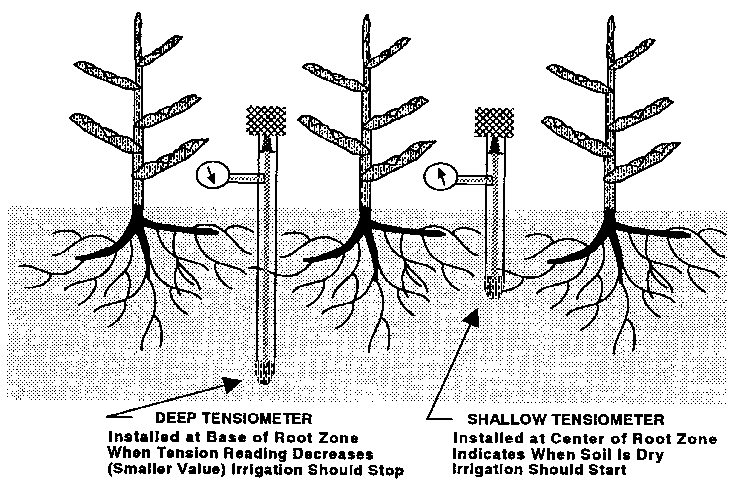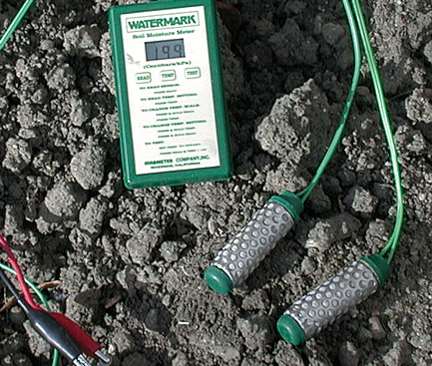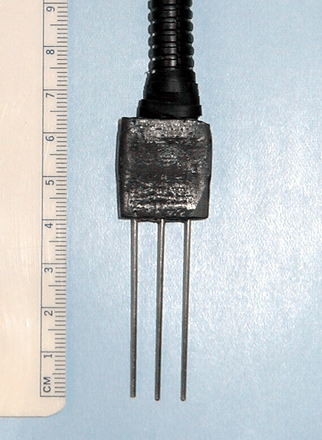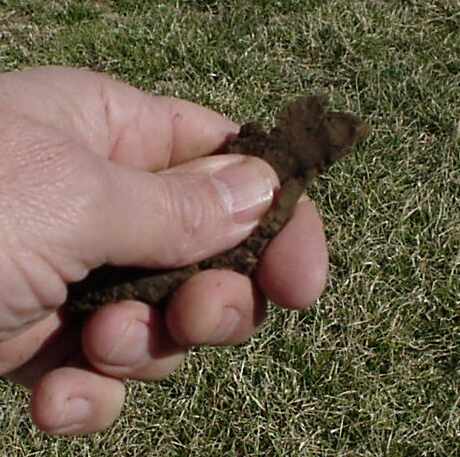Irrigation needs and how to test for them.
By: Tyrel Cale
What is Irrigation?
Irrigation is the process of adding water to a soil in order to raise the water content higher then the wilting point. Water is continually used by plants during the growing process. By adding water to the soil through irrigation we can make sure that the soil has a sufficient amount for plant growth. To do this effectively we must create an irrigation schedule.
What is an Irrigation Schedule?
An irrigation schedule is a schedule of when to water and how much water to apply to the soil. When done correctly the plants will actually grow better and produce a higher yeild. But in order to setup an effective schedule you must know how much water content is actually in the soil.
How do we test for water content in the soil?
There are a few different methods of testing the water content. We will cover four different types of testing: Tensiometer, Resistance blocks, TDR, and the hand feel method.
Tensiometer:
The tensiometer uses a column of water attached to a ceramic cup. There is a pressure gauge that is a the top of the column to measure how much of a vaccum is created. How the tensiometer works is very simple. If the soil is at field capacity then no water will be lost through the ceramic cup. But if the soil is lower then field capacity water will slowly seep out of the cup. As the water leaves the ceramic cup it causes a vaccum in the column which causes the gauge to get a reading. By taking a reading from the gauge you can figure out how much water is actually in the soil. This picture shows how depth of the Tensiometer can have an effect on the amount of water that is lost.
Resistance Blocks:
The resistance blocks use electrical resistance instead of vaccum pressure to determine how much water is in the soil. Resistance blocks or "gypsum blocks" are made by imbedding two electrodes in a block of gypsum. They are then buried in the soil and a current of electricty is sent through them. They measure the electrical resistance between the electrodes and the resistance is directly related to the soil's water content.
Time Domain Reflectometry (TDR):
TDR also uses electrical measurements of the soil to determine soil water content. Metal probes are placed in the soil. An electromagnetic pulse is sent through the soil. The electrical capacitance between the probes is measured. How much the pulse is reflected back can be related to the soil's water content.
Hand Feel Method:
The hand feel method is probably the most widely used method. There are no fancy machines to use, and there is no need for electricity. This method uses the observers own hands and senses to determine the amount of water content in the soil. The object is to try and ribbon out the soil between the thumb and pointer finger and observe how far the ribbon goes. If the water content in the soil in higher the ribbon will be longer. If the content is lower there will hardly be a ribbon at all.

Summary:
Irrigation plays a big role in all aspects of growing plants. If the plants do not have access to enough water then they will not grow properly. It is important for any person involved in horticulture to know how to test the soil for its water content. We covered a few different ways to test the soil to determine if it does have enough water for the plants. There are a few other ways to test the soil. Finding the way that works best in your situation making it easier to determine the water content of your specific soil.
Resources:
Iowa State University Extension
North Carolina Cooperative Extension Service
Colorado State University Extension
Brace Centre for Water Resources Management
USDA Agricultural Research Service
For more information contact:



